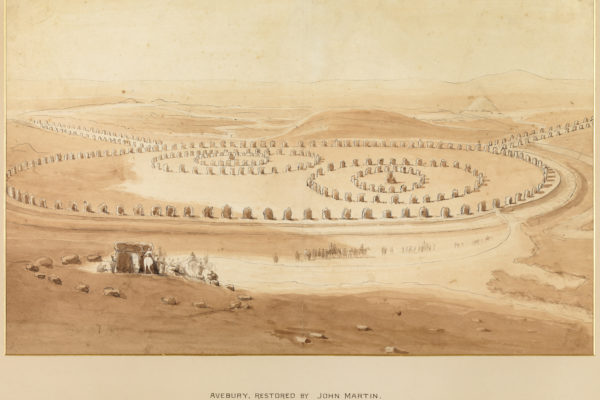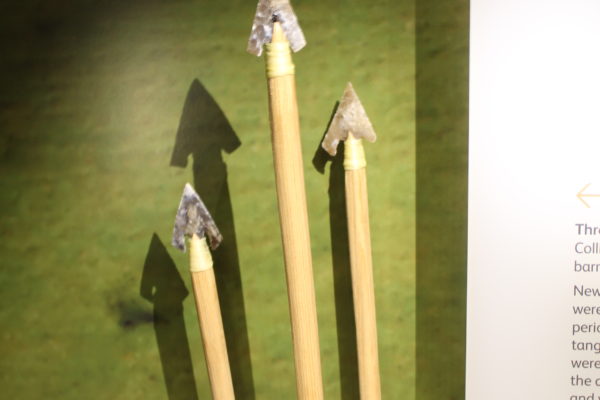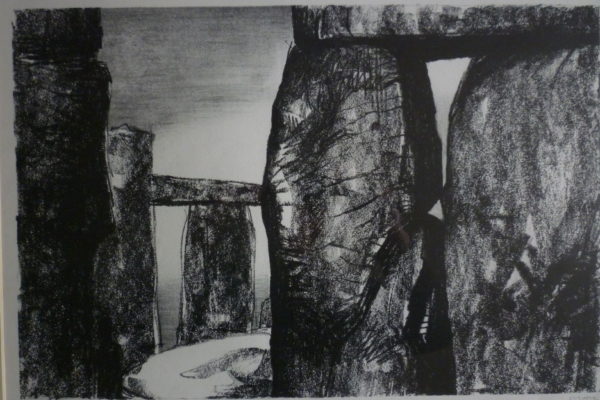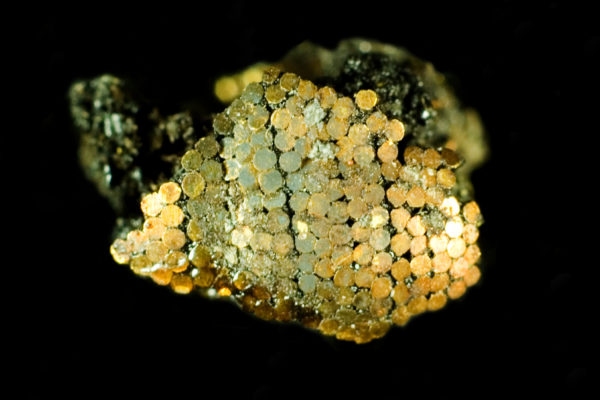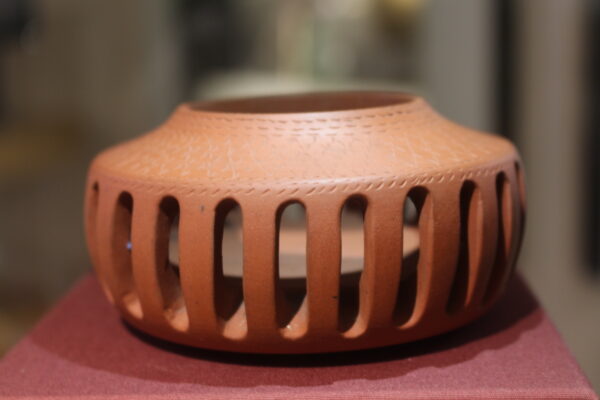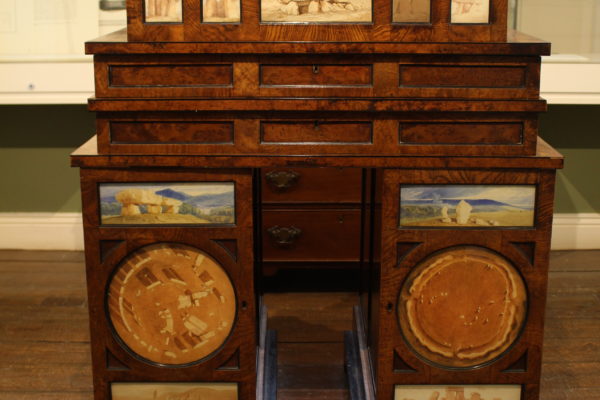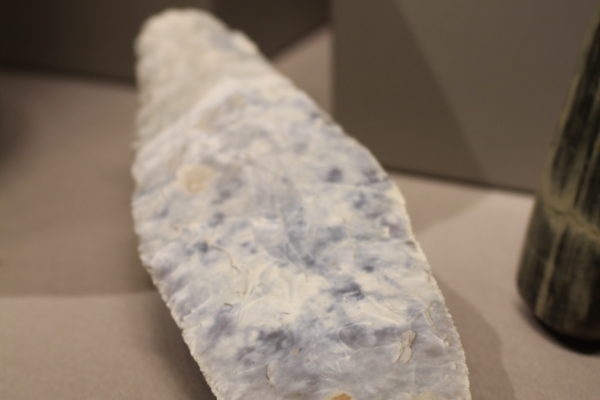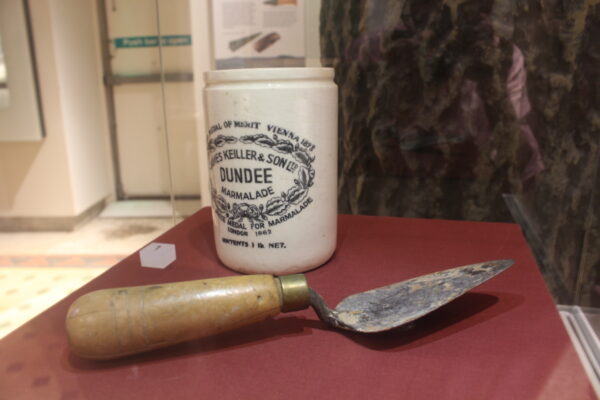Avebury Restored by John Martin, 1823-4
John Martin (1789-1854) painter, engraver and illustrator was a key figure in nineteenth century art best known for dramatic work often of religious or fantastical subjects. Exhibited at the John Martin: Apocalypse exhibition at Tate Britain in 2011.
Inside The Circle by Henry Moore signed 1971-73
Henry Moore O.M. (1898-1986), was a sculptor born at Castleford, Yorkshire. This is the fourth plate in Henry Moore’s Stonehenge suite and the Museum has a complete set of fifteen lithographs and one etching of only sixty sets that were produced.
Bush Barrow – gold studs
The Bush Barrow Chieftain died in about 1950BC and was buried under a barrow on top of a ridge looking down over Stonehenge. He was buried with the objects that symbolised his power and authority – an axe, ceremonial mace, gold sheet lozenge and two bronze daggers. His axe and
Stonehenge Cup – replica made by Josiah Wedgwood
This is a replica of a miniature vessel or incense cup found with a cremation burial excavated from a barrow close to Stonehenge. The burial was probably that of a woman who was buried with gold and amber jewellery. The burial was excavated by William Cunnington over 200 years ago
Britton cabinet
This cabinet was made as a talking piece for a gentleman’s drawing room, once owned by the travel writer John Britton. In the top is a model of Stonehenge as it was when the cabinet was made in 1824. The sides of the glass are coloured red and orange so
Stonehenge dagger
Exquisite flint dagger, known as the Stonehenge dagger, dating to the early Bronze Age, about 2,300 – 2,000 BC. The dagger is a masterpiece of flint-working and is similar in shape to daggers made of copper or bronze. These high quality flint daggers require just as much skill and expertise
Alexander Keiller’s trowel
This trowel was used by Alexander Keiller during his excavations at Avebury. It was part of his archaeological excavation kit that included measuring tapes, and drawing equipment. Alexander Keiller was a flamboyant millionaire with a passion for archaeology. He inherited his fortune from the family marmalade business and became fascinated


